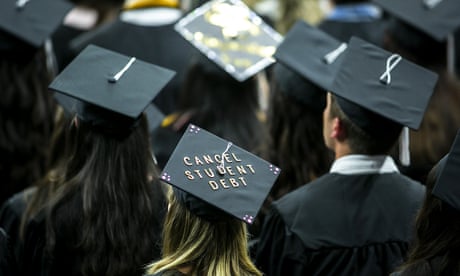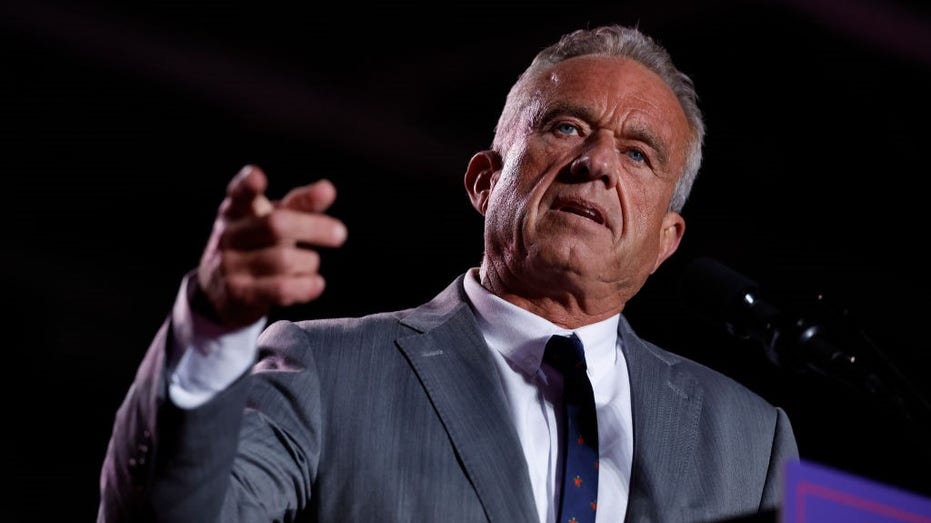- by foxnews
- 08 Apr 2025
‘Who should pay?’: student debt relief in limbo as supreme court decides fate of millions
‘Who should pay?’: student debt relief in limbo as supreme court decides fate of millions
- by theguardian
- 04 Jan 2023
- in politics

Debt-laden borrowers will be nervously watching the US supreme court come February when the justices hear arguments for two cases that will ultimately decide the fate of over 26 million student loan borrowers who have applied for loan forgiveness.
Though the future of student loan forgiveness is uncertain in the hands of a deeply conservative court, two researchers who have studied public opinion on student debt and college accessibility see room for optimism, even amid uncertainty around the issue.
The millions of Americans who applied were set to get at least $10,000 (�8,320) in relief for their loans under a plan that Joe Biden released over the summer. But the plan's rollout was halted in November by a Trump-appointed federal judge in Texas, putting the possibility of forgiveness into question.
"[Student loan forgiveness] is something that five years or 10 years ago, we wouldn't have seen. It shows that there's movement for politicians and the public to do something about student debt that has meaningful effects for a lot of people," said Natasha Quadlin, a professor at University of California, Los Angeles who co-wrote a book this year, Who Should Pay?: Higher Education, Responsibility and the Public that documents the change in public opinion on how much the government should pay for higher education.
Quadlin, along with her co-author Brian Powell, a professor at Indiana University, started administering surveys in 2010 asking people who should pay for college: parents, students or the government.
In 2010, nearly 70% of respondents believed that only parents and students should be funding higher education. In 2019, the number dropped to 39%. Meanwhile, the percentage of people who believe the government, both federal and state, should primarily fund college rose from 9% in 2010 to 25% in 2019. All other respondents indicated that the government should help parents or students pay for college.
When Quadlin and Powell set off to do this decades-long research in 2010, they did not realize how dramatically people's perspectives on who should pay for college would change.
"When we started working on the book and collecting data, the idea of loan forgiveness was not even really part of the American consciousness," Powell said.
The researchers note a few factors that went into this rapid shift. First, student debt nearly doubled in size between 2010 and 2015, reaching $1.3tn (�1tn) by the end of 2015. The cost of college was also rising, especially since states were slashing higher education budgets during the Great Recession.
"It became apparent that the current generation that was going through higher education just wasn't getting a very good deal in terms of the returns they were seeing," Quadlin said.
Some respondents also noted that the Affordable Care Act, passed in 2010, showed them that government can offer broad support for certain areas of life.
"Several people said: 'If we can do this for something as important as healthcare, and ensure health insurance, then we should be able to do that for education as well,'" Powell said.
Sentiment had changed so much that some states were discussing the possibility of free college, a policy that Quadlin and Powell did not even consider putting on their survey in 2010. By 2019, over 20 states offered programs that either reduced or eliminated the cost of public college. Nearly 40% of respondents on the survey strongly and 32% somewhat agreed that public college should be free for those who are qualified to attend.
Loan forgiveness and free college, while similarly addressing accessibility to higher education, are ultimately two different issues. While the researchers note that both should be pursued simultaneously, it appears that much of the current focus is on addressing debt forgiveness as the immediate problem.
How quickly either will be addressed is unclear, but "the costs and burden [of student debt] is so high and so widespread", Quadlin said.
Throughout the book, Quadlin and Powell note how quickly public opinion had changed on same-sex marriage in a short amount of time. Powell, who has studied this change in opinion, noted that Congress just recently passed a bill protecting same-sex marriage with bipartisan support. In 2010, Gallup reported 28% of Republican support same-sex marriage. In 2021, the percentage rose to 55%.
While Republicans have largely been against Biden's student loan forgiveness plan, there is some evidence that there could be Republican support one day. In 2014, Tennessee, under a Republican governor, created a scholarship program for free community college - an initiative that is still thought to be too radical at the federal level.
"We've had examples of bipartisan support. Education is one of those areas that people believe in - the American Dream, that people can be able to have the education they need to have a fulfilling life and successful career," Powell said. "It's hard to envision the changes in the past year without the dramatic change in public opinion that occurred in a really short period of time."
- by foxnews
- descember 09, 2016
Ancient settlement reveals remains of 1,800-year-old dog, baffling experts: 'Preserved quite well'
Archaeologists have recently unearthed the remarkably well-preserved remains of a dog from ancient Rome, shedding light on the widespread practice of ritual sacrifice in antiquity.
read more





